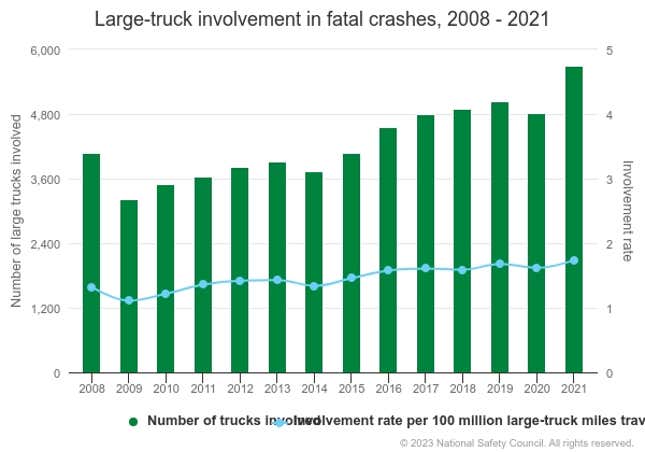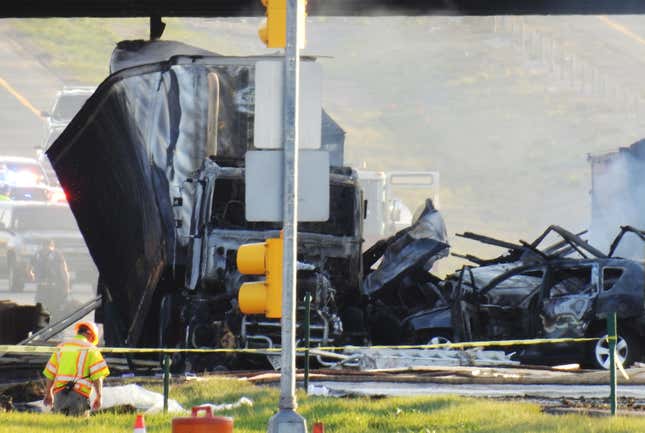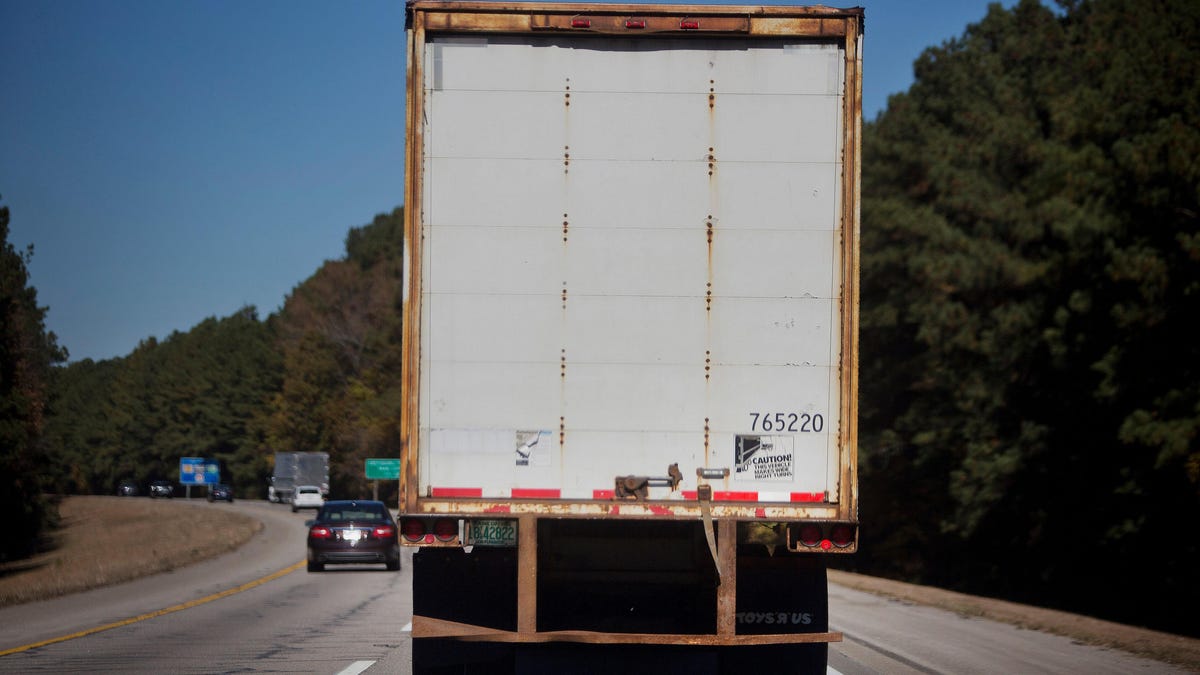Trucking companies have been getting away with low insurance minimums that have failed to keep up with inflation, and it’s creating unsafe roads for the rest of us. The last time that U.S. regulation set minimums for truckers was in 1980 when the Motor Carrier Act mandated they carry at least $750,000 policies, which was a reasonable sum at the time. Trucker’s insurance minimums have not been raised in 44 years, and the low bar has permitted trucking companies to skirt by with little regard for road user safety, according to Streets Blog USA.
When the 1980 Motor Carrier Act was passed, the minimum insurance policy was enough to cover medical expenses or lost wages that truck crash victims could incur. But in 2024, that amount is too low to cover medical expenses, let alone wages. When adjusted for inflation, $750,000 comes out to nearly $3 million, based on figures from the Bureau of Labor Statistics. This has led U.S. lawmakers to push for higher minimums that account for inflation with a new bill that raises minimums to $5 million. Per Streets Blog:
Rep. Chuy Garcia (D-Ill.) and Hank Johnson (D-Ga.) recently introduced the Fair Compensation for Truck Victims Act, which would increase truck companies’ minimum insurance premiums from the $750,000 cap set in 1980 to the $5 million it would be today had it been simply adjusted for inflation.
It’s worth noting that the proposed minimums in the bill exceed the inflation-adjusted amount, but supporters say the new minimum reflects the “true cost of a tragic truck crash.” Truck safety advocates also back the bill, adding that raising the financial bar of entry would benefit other drivers by removing fly-by-night trucking companies that prioritize contracts over safety and seldom even have the means to cover the costs of a major accident, as Streets Blog explains:
In part because reasonable insurance minimums are no longer a barrier to securing shipping contracts, small, owner-operated trucking carriers have exploded across the United States since 1980, with 95.8 percent of companies on U.S. roads today running 10 or fewer trucks each, and most running just a single vehicle. Many of those micro-carriers are undoubtedly safe and responsible, but some are inexperienced shoestring operations racing to compete on price in a crowded field. Burns says many can barely afford minimum insurance, never mind things like hiring full HR departments to vet drivers or installing automatic emergency braking on vehicles.
“Anyone can get into this line of work; no one is really on first base [in terms of] knowing who these companies are,” added Zach Cahalan, executive director of the Truck Safety Coalition. “And if you’re the insurance provider, it’s like counting cards in blackjack; $750k is less than one-fifth of the risk that [a crash] really poses, so you really can’t lose. Insurance carriers are incentivized to open up as many of those policies as they can, even if it means having higher crash rates in their portfolio … Everyone wins, except for road safety.”
One of the most publicized truck accidents of the last few years was the 2019 Colorado crash that killed four and resulted in a prison sentence of 110 years for the truck driver. The trucking company that the driver worked for carried a $750,000 insurance policy, which was not even close to covering the losses.
To top it all off, the owners reportedly registered another company under a new name the very next day and continued to operate thanks to dirt cheap insurance minimums required by the law, racking up more violations in the process.

The National Safety Council says truck crashes have been increasing, leading to 5,800 fatalities in 2021. That’s close to a 50 percent increase from the decade prior. Streets Blog goes on to say heavy truck crashes accounted for 12 percent of all road deaths in 2021 despite making up five percent of registered vehicles and logging only 10 percent of all miles traveled on U.S. roads. The full report, which is worth a read, concludes that trucking companies should be held to a higher standard when it comes to safety. And if there’s one way to do that, it’s by mandating higher insurance minimums.








